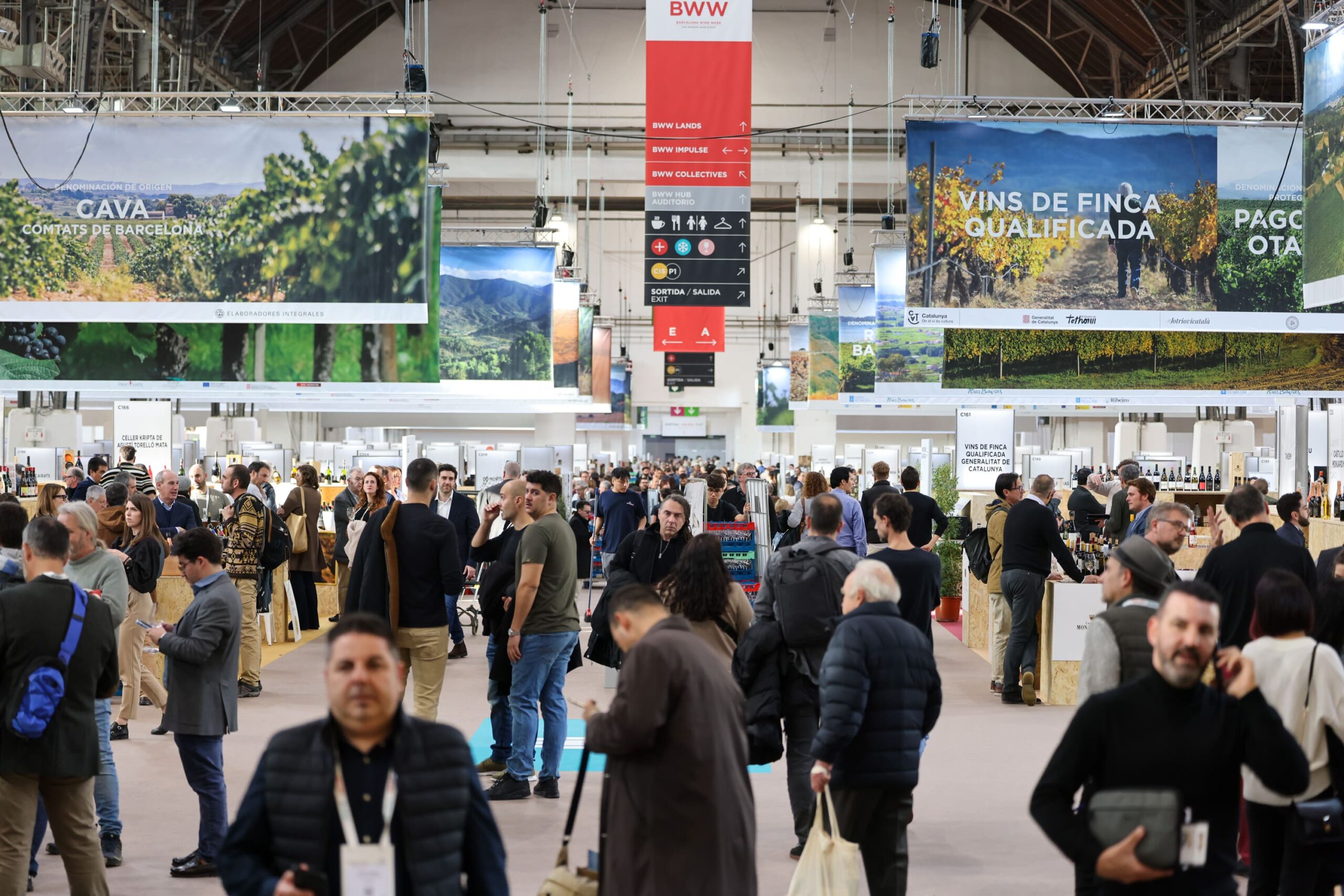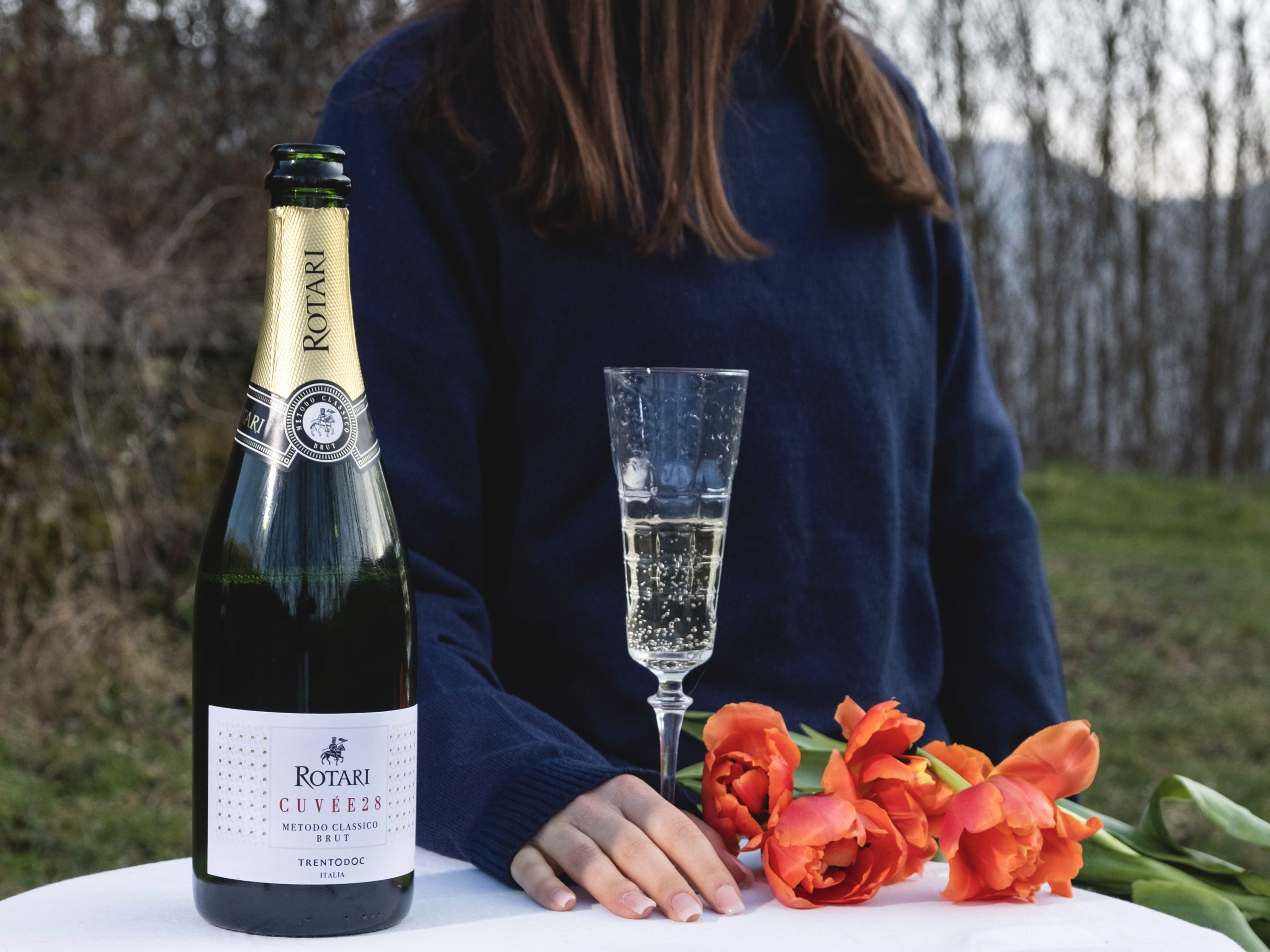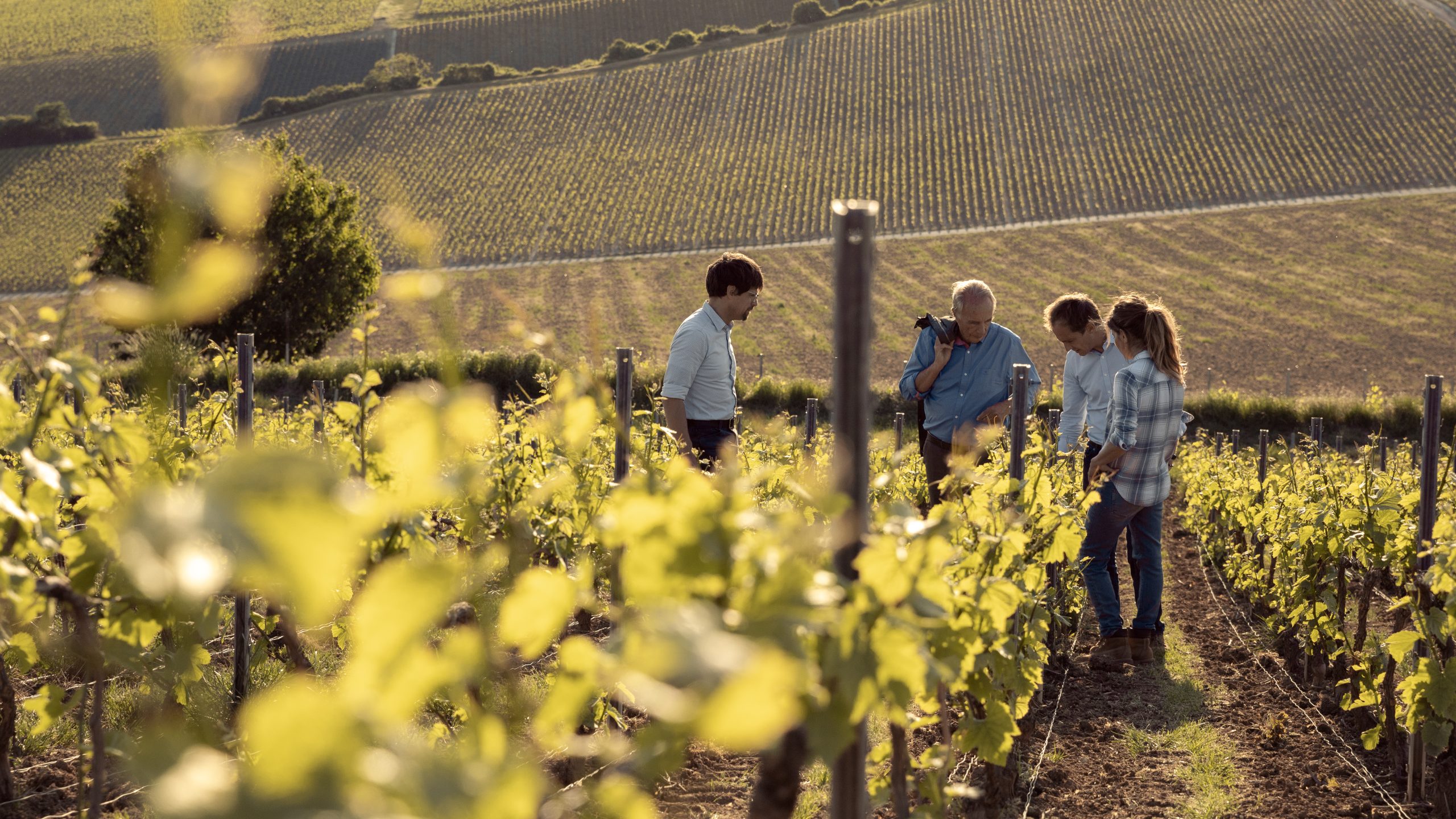Frosty reception: why some producers have given up fighting frosts
As grape growers embrace sustainability, is it time for them to give traditional anti-frost measures the cold shoulder?

In a changing climate, the old certainties are no more. Whereas producers could once count on weather patterns largely following the sequential order of the seasons, growing seasons are increasingly erratic, placing vineyards in the firing line of all manner of hazards. One such risk, which often comes with very little warning, is frost.
In winter, these frosts are generally not a concern, as the vines are dormant but, if the early spring is mild, prompting an early budburst, and then there is a sudden cold snap, it can be truly devastating for the harvest prospects.
The traditional method for combatting such weather events has been to light crop candles and stake them into the ground between the rows of vines. The twinkling lights certainly generate good photos, but as a practical technique against frost, the drawbacks are plenty.
Many producers do not have the labour resources to place, light and re-light hundreds upon hundreds of candles over the course of a night, and they are largely considered to be a dirty (due to the smoke) and inefficient method.
Technology has moved on, providing other solutions – but producers do have to consider whether it is worth investing in such systems and, perhaps most importantly, whether doing so is in line with their green ambitions.
Anti-frost sprinklers
One of the most widespread techniques to reduce the damage done by frosts seems entirely counter-intuitive, and that is to spray water over the vines.
Tel Aviv-based company Netafim manufactured agriculture irrigation systems before expanding to produce antifrost sprinklers in the last decade. Today, they are used in vineyards everywhere from Chile to China.
Netafim global product manager Orit Katzir claims that sprinkler systems “offer several advantages” over other methods, explaining: “By forming a continuous ice layer around the buds, sprinklers maintain temperatures just above 0°C to prevent freezing. Sprinkler systems can also be automatically activated based on temperature thresholds, ensuring timely frost protection throughout the night.
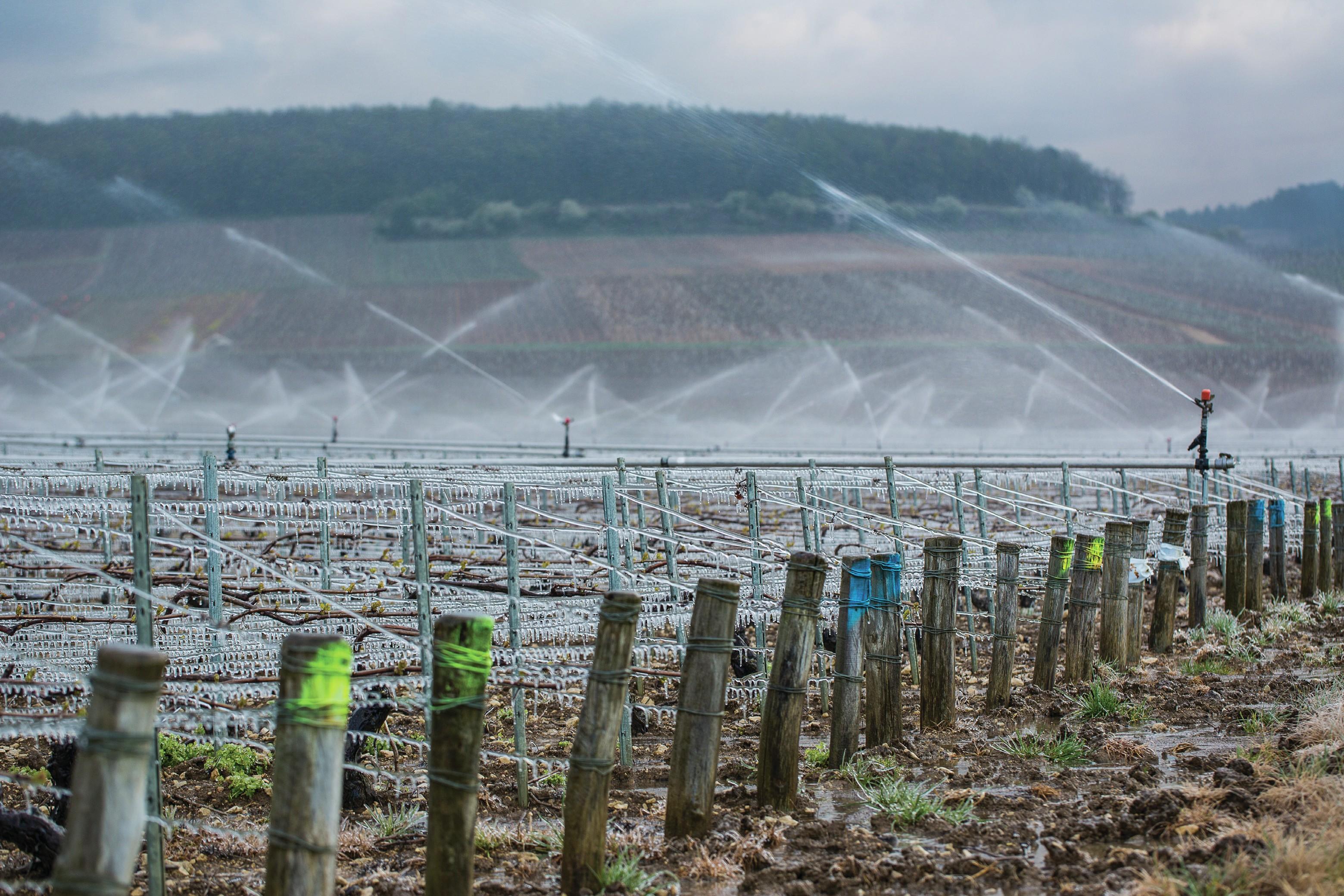
“Compared to more high-energy methods, like heaters or fans, sprinklers are durable, and their low energy requirements cut operating costs by up to 30%, offering a sustainable and reliable frost mitigation solution,” says Katzir.
One downside of sprinklers is that, in more arid winemaking regions, which can still be affected by frosts, water is a limited resource.
“To address water usage concerns associated with traditional full-coverage sprinklers and to ensure effective coverage of vines, we have developed a sprinkler specifically designed for vineyard frost mitigation,” says Katzir. “Known as the Pulsar+StripNet, this sprinkler sprays the rows using a unique pulsing system that emits water every few seconds, instead of in a continuous stream. This innovative combination of a precise, targeted strip-wetted pattern and pulsing action reduces water consumption by more than 50% compared to full coverage systems.”
Katzir adds that “frost sprinklers generally have lower operational energy demands than heaters, windmills or helicopters”, making them a largely eco-friendly option. “They rely on the principle of latent heat release during water freezing, which is more energy-efficient than the fuel-intensive operation of heaters or the mechanical energy required by windmills and helicopters. Sprinkler systems are widely favoured for frost protection due to their proven effectiveness,” he adds.
Blowing hot and cold
Windmills, also known as turbines or fans, work on the principle of churning warm and cold air. Sometimes a heating element is integrated into the fan too. TBX Tow and Blow Frost Fans, which is based in Hastings, New Zealand, and ships its equipment around the world, claims that frost fans are superior to the competition in terms of effectiveness. “Helicopters are very expensive and offer inconsistent area protection, as frosts are often at night. Therefore, they can’t see the exact area they are trying to cover, and they normally try to do too big [an] area, therefore allowing frost to settle in and do damage,” says TBX sales consultant Joshua Smith.
“Water sprinklers are an option, but it is very expensive to install the pumps, along with large water retention ponds, to handle the volume of water required to protect large areas. One major risk that comes about is, if there are more than two small frosts in a week, after the second frost there is no water protection as it normally requires a few days for these retention ponds to refill.” Depending on location, Smith adds, water restrictions can also hinder any grower that is solely dependent on water for frost protection. “Once a fan is set up for frost protection, that machine is 100% consistent in its timing and protection,” says Smith. “The machine consistently rotates at a set speed and is set to focus on a specific area. Consistently focusing on one area means you have a very high chance of having an 100% frost-protected crop around the fan or area it is set to protect,” says Smith. It is also claimed that these windmills can work against both radiation frosts, which occur on clear, cold nights, and advection frosts, which are the result of the movement of a mass of cold air.
In terms of the environmental footprint of running such fans, the technology is also becoming more energy-efficient, and therefore greener, with Smith saying that running the ‘Tow and Blow’ fan for one hour consumes around 12 litres of diesel – less than half the 25 to 35 litres of fuel said to be required to run some other fans for an hour, cutting costs and, of course, emissions. To put that 12-litre quantity into perspective, it is comparable to the hourly fuel consumption of a new LandRover travelling at 60mph.
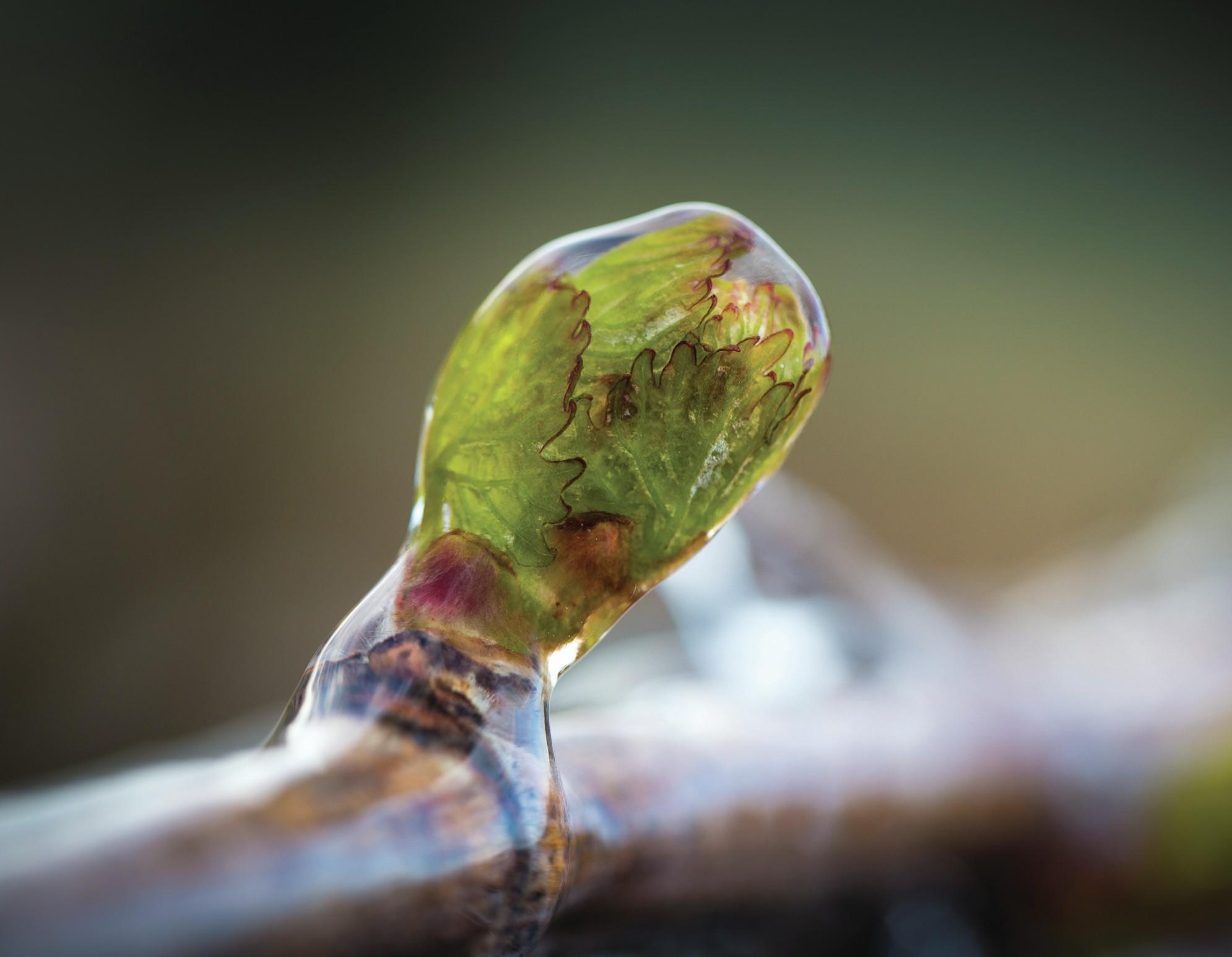
Detecting problems
The problem with mobile fans is that some warning is required for the vineyard team to know that it is time to move them into position. However, a separate technological innovation may well help to mitigate this issue.
The UK’s wine industry has two challenges which make frosts a worry. First and foremost is the cool, damp climate, and secondly is the abundance of early-budding grape varieties planted, with Chardonnay and Pinot Noir making up around 60% of all vines in the country. Early in 2024, a project to improve frost management in UK vineyards received £300,000 from the Department for Environment, Food & Rural Affairs (DEFRA).
The project, which is being trialled at a number of UK vineyards for a further year, uses sensors manufactured by Loughboroughbased TerraPrima to detect the risk of frost in real time, delivering warnings to wine growers through alerts sent to a mobile phone app.
One backer has been WineGB.
Partner Content
Communications manager Phoebe French says that the industry body is “actively recruiting additional vineyards to take part”in the trial – and among those already involved in the trial is viticultural education institution Plumpton College, located in Sussex.
“Our aim is to provide site-specific, highly localised forecasts, which will mean vineyard managers can be more targeted in their frost prevention,” says French. “This might involve focusing on a small portion of their vineyard which will be at risk, or on a particular grape variety which is undergoing budburst, or which has a lower tolerance to frost.”
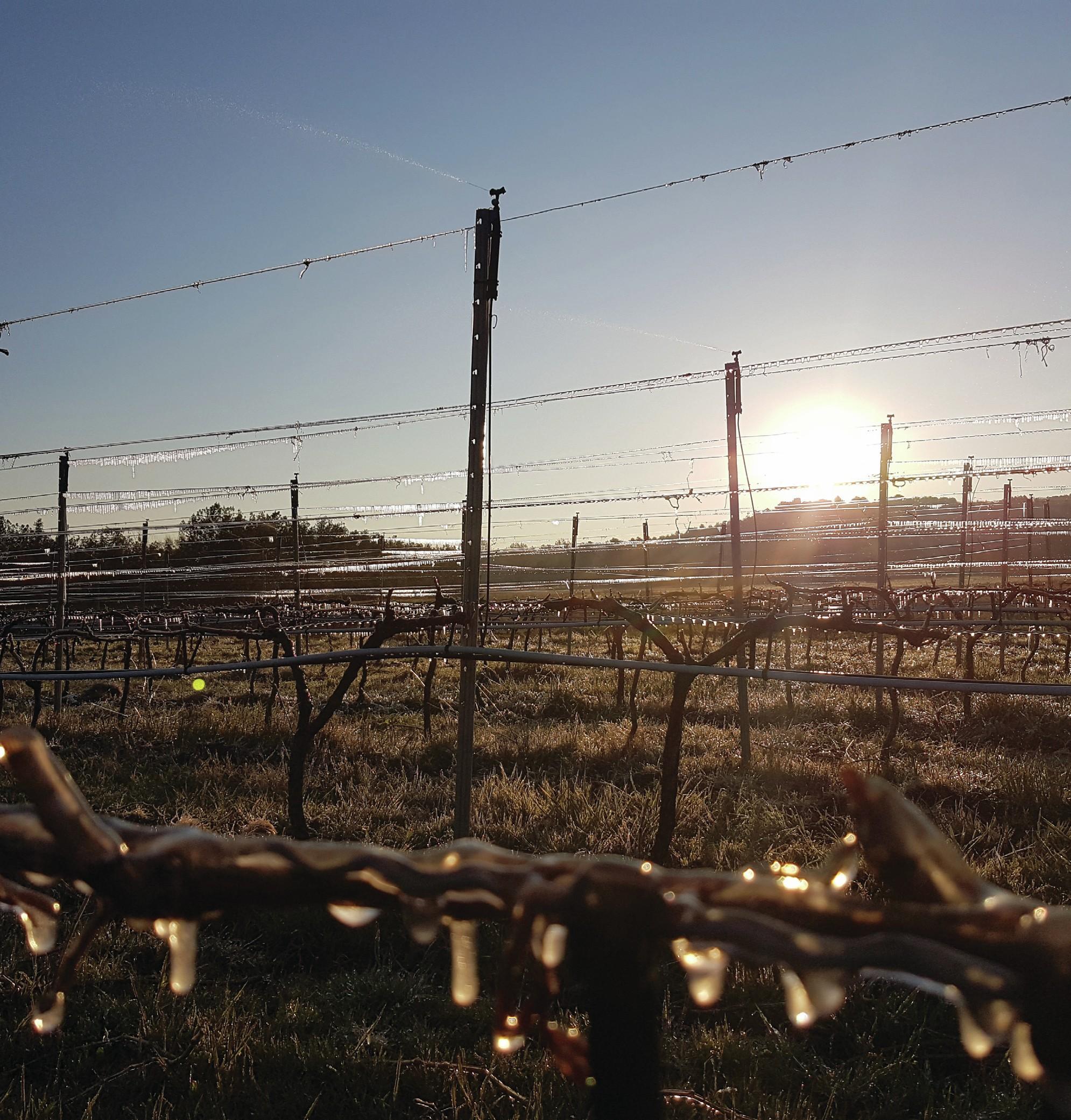
As for what methods growers should use if frost is about to strike, WineGB does not advocate one technique over another – it is ultimately a case of producers making use of whatever method they have access to.
‘Let it be’ approach
The technological solutions for combatting frosts are improving each year, becoming smarter and therefore enabling more focused, less energy intensive methods. But the idea of trying to fight frosts using fans, sprinklers or even heated vine trellis wires is a fairly novel idea. There are large parts of the wine world at risk from frost, and yet the producers are reluctant to make such a costly investment.
Alex Huber, the owner of InVina in Chile’s Maule Valley, explains why the producer does not use frost control in any of its vineyards: “Firstly, the value of the grapes is just too low to justify the investment required for frost control. Consider that average grape prices in Chile seldom pass US$0.50 per kilo. Secondly, we just don’t have the water resources – the standard frost control systems in Chile are water-based.”
InVina has learnt that it can be better to beat a tactical retreat, rather than take a stand and potentially lose a large part of your crop.
“In Batuco [in the Coastal Mountains], our strategy has been to ‘run away’ from the lower-lying frost-prone sectors – we have ripped out most of the vineyards in the low-lying areas, and all new plantings are up in the hills where frost incidence during the growing season is much lower,” Huber continues. “It still freezes in mid-winter, but then nothing much happens, except on the rare occasion when we get deep frosts, say -5°C or lower still, which can cause damage even in winter.”
Plenty of other producers also question whether it is worth the money. Earlier this year, Almudena Alberca MW, Spanish brand ambassador at wine investment firm Oeno, echoed Huber ’s sentiment in relation to Ribera del Duero in northern Spain: “Many winemakers, if they know frost is approaching, say: ‘Let’s go to the bar and have some wine,’ and wait for it to pass,” she told db.
Although it is not common to take preventative measures yet, in time it may well become so as more Ribera del Duero wines gain prestige.
“As wineries start to get more recognition and sell their wines for higher prices, they will start to take preventative measures. It will become worth the investment to use candles, fans, etc to protect the crop,” Alberca explained. “Producers need a very clear economic model to make this possible as it costs around €500–€600 per night to run the fans. You need to heat the fans, then move them. It has a very high economic impact, so only those producers with high prices for their wines can afford it. It’s not only the matter of investment: you have to be more technically minded, and the older viticulturalists are not always so.”
Lessons from DRC
Given that it may not be worth splashing out on sprinklers or fans until your grapes reach a certain value, it stands to reason that an ultra-premium producer would benefit most from the use of such technology, helping the business to protect its small quantities of high-value grapes. However, one of the world’s most prestigious wineries confounds this notion. At the London en primeur tasting of Domaine de la Romanée-Conti’s 2021 wines, held at Corney & Barrow in early 2024, domaine co-directors Perrine Fenal and Bertrand de Villaine shed light on a vintage which saw an April cold snap obliterate many of the buds. The Corton and Montrachet vineyards both lost 90% of their crop, and La Tâche’s 2021 yield was ultimately 8.6 hectolitres per hectare (hl/ha) – whereas in 2020 it had been 29.7hl/ha.
According to Fenal and De Villaine, 2021 marked the first time that Domaine de la Romanée-Conti had used candles, although they did not seem keen to try them again. Likewise, De Villaine called windmills “impractical” due to the noise disturbance they can cause to local residents. The estate is reluctant to try other methods, according to De Villaine: “Are we still going to be making Romanée-Conti in 10 years’ time if we have heating wires through the vines, or are we going to skip vintages?” The answer to both of those questions was a resounding “No.”
One effective, low-tech solution practiced across Burgundy, and by Domaine de la Romanée-Conti, is late winter pruning, which delays budbreak. But with climate change making the timing of frosts less predictable, the level of foresight required does not make it an ideal solution, and there is evidence to suggest that delaying bud development can negatively affect the maturation of the grapes later in the growing season. “We have a small production; we don’t have the right to modify what happens,” argued De Villaine. “No matter what you do, nature always wins.”
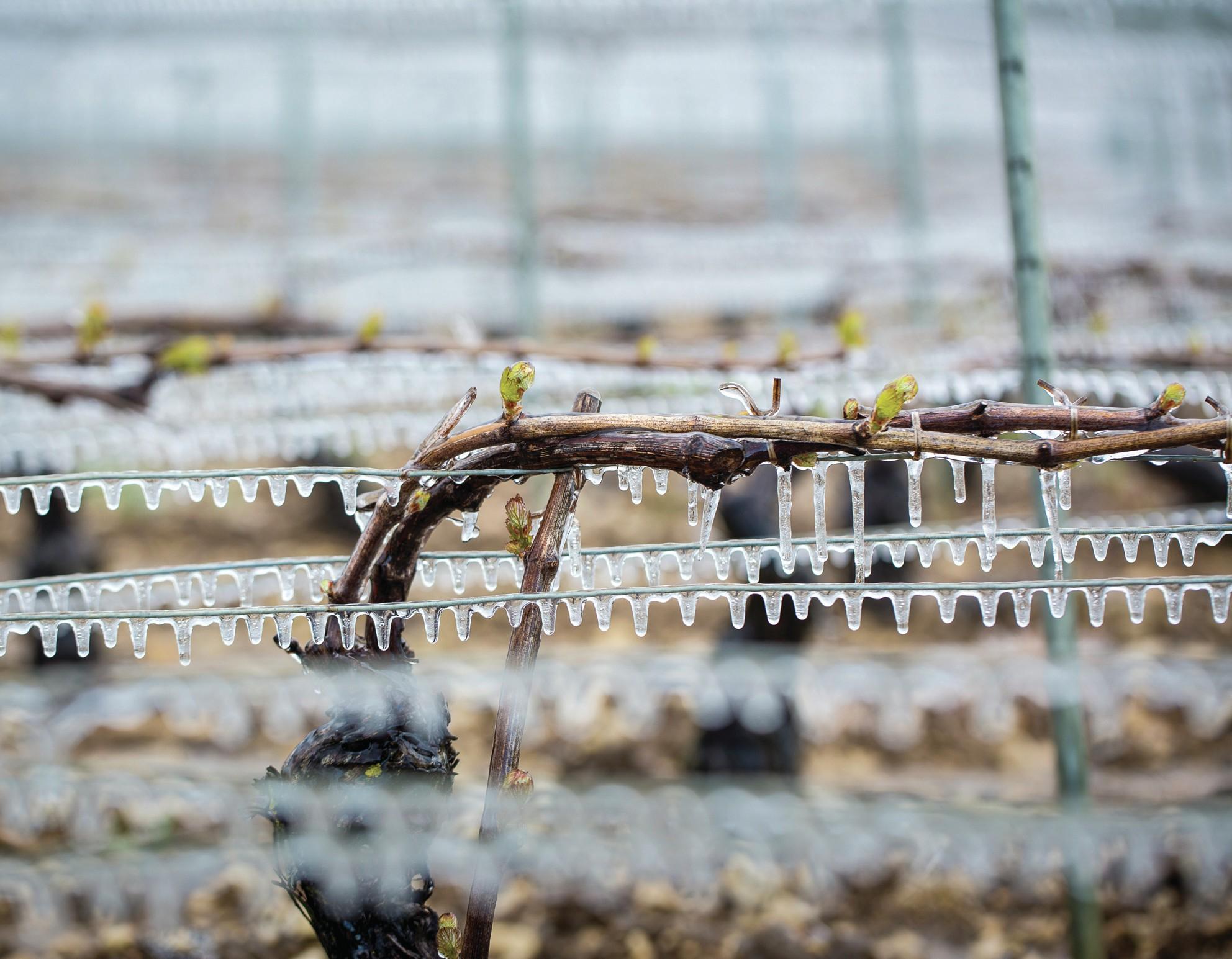
Domaine de la Romanée-Conti’s approach is not just indicative of an environmentally-charged, traditionalist stigma against anti-frost technology, but also of how to spin a bad vintage. By marketing frost-stricken vintages as more exclusive, and the result of a holistic, non-interventionist approach, interest in the scarce number of wines of what might be a poor growing season is heightened, and the prices of the vintage will naturally reflect that.
Insurance policy
But ignoring a cold snap is a luxury that only the select few can afford. Grape growing is agriculture, and green concerns will, for most, be secondary to balancing the books. Indeed, those producers that don’t deploy frost protection measures are, by and large, not doing so because of environmental considerations, but because of the financial ones that come with procuring, installing and running the required equipment.
The flipside to that is, if climate change continues to make frosts a bigger and bigger risk, then it will become a necessity for growers to procure such weapons for their arsenals.
As TBX’s Smith puts it: “When you look at the value of the six hectares which one fan protects, it makes the frost fan look very cheap, and if you view it as an insurance policy to ensure an annual income each year, it makes the decision very easy.”
The carbon footprint of such methods can also be kept low thanks to the use of sensors, such as those currently being trialled in the UK. The sector is also seeing constant innovation to reduce the energy and water required to run fans and sprinklers – perhaps as a consequence of the pressure that wine producers are facing to practise eco-conscious viticulture.
You may only need to run an anti-frost device for one night of the year, but those few hours could well decide the difference between whether or not you have a harvest to sell.
Related news
Amphora wine 2.0: The resurgent movement
Perrier-Jouët combines art and biodiversity in Ambonnay vineyard

